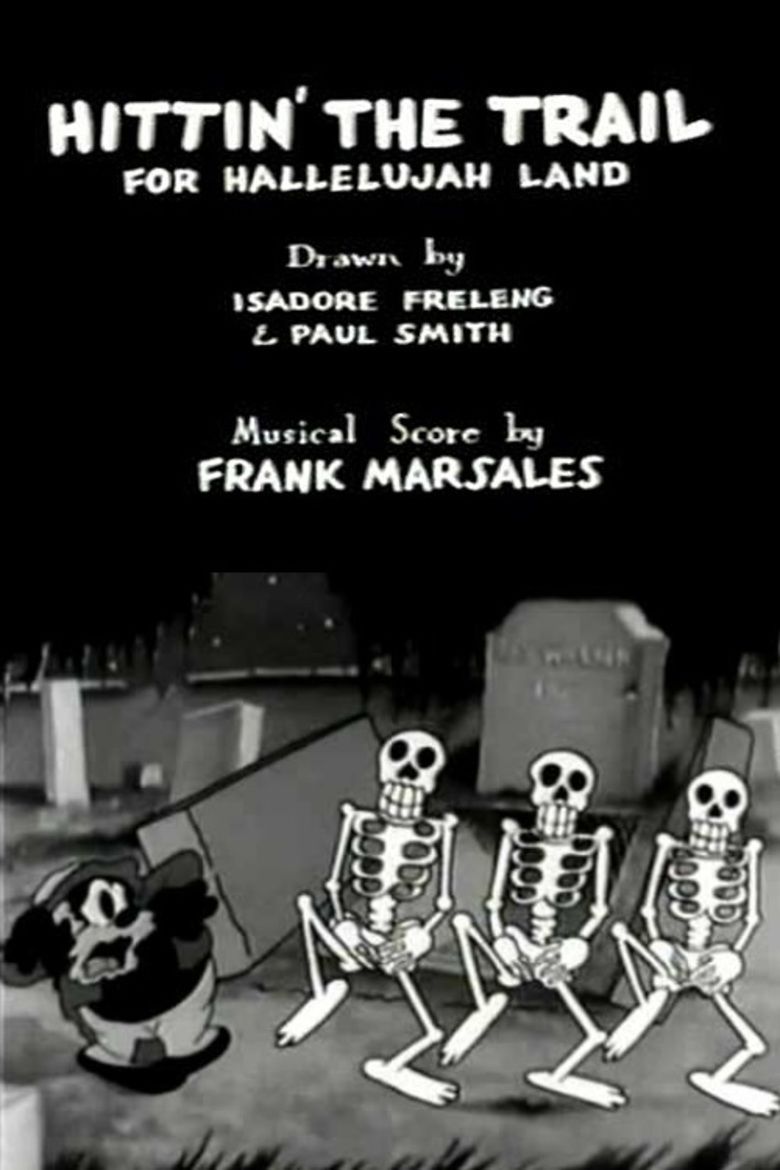Hittin the Trail for Hallelujah Land
5.4 /10 1 Votes5.4
Director Rudolf Ising Language English | 5.2/10 IMDb Duration | |||||||||||||||||||||||||||||||||
 | ||||||||||||||||||||||||||||||||||
Release date November 28, 1931 (USA) | ||||||||||||||||||||||||||||||||||
Hittin the Trail for Hallelujah Land is a Merrie Melodies animated cartoon directed by Rudy Ising (uncredited), produced by Leon Schlesinger Productions, Warner Bros. Pictures and The Vitaphone Corporation, and released to theatres on November 28, 1931. The minimal storyline centers on the plucky Piggys efforts to rescue his girlfriend and a doglike Uncle Tom from perilous predicaments and villains. The shorts stereotypical portrayal of black characters prompted United Artists to withhold it from syndication in 1968, making it one of the infamous Censored Eleven. It was the second Merrie Melodies film to be released.
Contents
One of the "Censored 11" banned from T.V. syndication by United Artists in 1968 for alleged racism. Piggy and Fluffy have adventures on a riverboat and Uncle Tom is chased by skeletons promising to take him to Hallelujah Land.
Summary
Hittin the Trail for Hallelujah Land has a rudimentary plot, unlike most of the Merrie Melodies of the time, which barely have any plot at all. The cartoon stars the Mickey Mouse-esque Piggy, his girlfriend Fluffy, and a canine Uncle Tom. The film opens with a singing steamboat dancing down a river. On the deck, three blackface caricatures play the song for which the short is named on the harmonica, banjo, and bones. Meanwhile, Uncle Tom drives Fluffy toward the boat by donkey cart. The scene shifts to Piggy the riverboat captain in a sequence reminiscent of Disneys 1928 film Steamboat Willie. Fluffy joins the frolicking steamboat passengers and reunites with her boyfriend, but during the revelry, Piggy falls overboard. The pig has a run in with an alligator, but he makes it back to the boat. Meanwhile, Uncle Toms donkey bucks him into a cemetery. There, in a variation on a stock gag featuring a superstitious black man, he is scared by three dancing skeletons reminiscent of those in Disneys 1929 short The Skeleton Dance. Tom escapes to the middle of the river, but a shoddy boat leaves him stranded and drowning. Piggy saves the day but not before a vaudevillian villain kidnaps his porcine paramour. Piggy captures the villain on a passing mail hook, leaving the villain tortured over a buzz saw. This short marks the second and last appearance of the characters Piggy and Fluffy.
Distribution
Hittin the Trail for Hallelujah Land was released in American theaters on November 28, 1931 by Warner Bros. The cartoons copyright expired in 1959, making it go into public domain. However, the cartoon has been withheld from distribution since 1968. At that time, United Artists owned the rights to most Looney Tunes and Merrie Melodies cartoons. Hittin the Trail for Hallelujah land and ten other cartoons were deemed to feature racist depictions of African Americans that were too integral to the films for simple cuts to make them palatable for modern audiences. The cartoon has never been released on laserdisc, home video, or DVD, not counting public domain home releases. These eleven cartoons make up the so-called Censored Eleven.
Credits
References
Hittin the Trail for Hallelujah Land WikipediaHittin the Trail for Hallelujah Land IMDb Hittin the Trail for Hallelujah Land themoviedb.org
